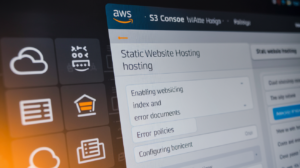Remember when your team could handle 100 API requests just fine, but then cried uncle at 1,000? It wasn’t pretty.
Your developers were up at 2 AM, coffee-stained and bleary-eyed, frantically patching security holes. Your customers got error messages instead of services. And your CEO wanted answers yesterday.
This is where an API Gateway becomes your secret weapon. Sitting between clients and your microservices, it handles the dirty work of authentication, rate limiting, and load balancing that most dev teams cobble together with duct tape and prayers.
I’ve seen companies slash integration time by 60% after implementing the right API Gateway strategy. But here’s what nobody tells you about choosing one…
Understanding API Gateway’s Role in Modern Architecture
Defining API Gateway and Its Core Functions
API Gateways are traffic cops for your digital ecosystem. They route requests, authenticate users, and manage the chaos of multiple service interactions. Think of them as bouncers at an exclusive club – only the right requests get through, while the rest are politely (or not so politely) turned away. Without this control point, your architecture would be a free-for-all of unpredictable service calls.
Security Benefits That Make API Gateway Essential
Security Benefits That Make API Gateway Essential
A. Centralized Authentication and Authorization
In modern systems, managing access is a nightmare without centralized control. API Gateway steps in as your security bouncer, checking IDs at the door. It handles all authentication and authorization in one place, eliminating the need to duplicate security logic across services. This single checkpoint approach makes your system both more secure and easier to maintain.
B. Protection Against Common API Threats and Vulnerabilities
API Gateways are your frontline defense against the bad guys. They protect against injection attacks, malformed requests, and other nasty tricks hackers use. Think of it as having a security expert constantly scanning every request before it reaches your precious services. Without this shield, you’re basically inviting attackers to probe your system’s weak points directly.
C. Traffic Monitoring and Anomaly Detection
Spotting weird behavior is crucial for security. API Gateways watch all traffic patterns and raise red flags when something looks fishy. Is someone suddenly hammering your payment API at 3 AM? Your gateway catches that. This real-time monitoring means you can respond to potential breaches before they become disasters, not days later when damage is done.
D. Data Encryption and Compliance Management
API Gateways ensure your data stays locked down tight during transmission. They handle encryption protocols seamlessly, often with zero extra work from developers. Plus, they’re goldmines for compliance requirements like GDPR or HIPAA. Instead of retrofitting each service for regulatory standards, your gateway can enforce policies universally across your architecture.
E. Rate Limiting and DDoS Prevention
Nothing tanks a system faster than being flooded with requests. API Gateways implement rate limiting to prevent abusive clients from overwhelming your services. They can distinguish between legitimate traffic spikes and malicious DDoS attacks, throttling suspicious sources while keeping things running smoothly for real users. Without this protection, even a moderate attack could bring your entire system crashing down.
Performance Advantages of Implementing API Gateways
Performance Advantages of Implementing API Gateways
A. Load Balancing for Optimal Resource Utilization
Ever watched traffic controllers direct planes at busy airports? That’s exactly what API gateways do with incoming requests. They distribute traffic evenly across your backend services, preventing any single server from getting overwhelmed while others sit idle. Smart load balancing algorithms can even route requests based on server capacity, geographic location, or response times – keeping your entire system humming along efficiently.
B. Caching Strategies to Reduce Backend Load
Think of caching as your system’s memory trick. API gateways store frequently requested data so your backend doesn’t have to work up a sweat delivering the same information repeatedly. When a user asks for something the gateway already has cached, it serves up the response instantly. This slashes backend processing by up to 80% for common requests and dramatically improves response times. Your users get lightning-fast experiences while your servers enjoy a much-needed breather.
C. Request Transformation and Response Optimization
API gateways are like translators at a global summit. They can transform incoming requests on the fly – converting between XML and JSON, adding required headers, or reformatting parameters to match what your backend expects. On the way back, they optimize responses by compressing data, removing unnecessary fields, or restructuring information for specific clients. This two-way transformation means your backend services stay lean and focused while clients get exactly what they need.
D. Circuit Breaking to Prevent Cascading Failures
Remember how one burnt-out Christmas light used to kill the entire string? Circuit breaking ensures your API doesn’t suffer the same fate. When a downstream service starts failing, the gateway “trips the circuit” – temporarily blocking requests to that service instead of letting them pile up. This prevents one troubled service from crashing your entire system. Meanwhile, the gateway can serve cached responses or fallbacks, keeping your application responsive even during partial outages.
Business Value and Operational Excellence
Business Value and Operational Excellence
A. Accelerating Time-to-Market for New Features
API Gateways slash development cycles dramatically. Instead of rebuilding authentication, rate limiting, and monitoring for each service, teams leverage pre-built gateway functionality. This means developers focus solely on business logic, cutting weeks from release schedules and getting features to customers before competitors even finish their planning phase.
B. Enabling Monetization of API Assets
Think your APIs are just internal plumbing? Think again. With an API Gateway, suddenly those endpoints become products you can package, price, and profit from. Companies are turning their data access into subscription services, creating tiered pricing models based on call volume, and opening entirely new revenue streams that were impossible before.
C. Analytics and Business Insights from API Usage
API Gateways don’t just route traffic – they reveal gold mines of user behavior. Every request tells a story about what customers value. Which endpoints get hammered at 9am? Which ones spike during seasonal events? This isn’t just technical data, it’s market intelligence that helps product teams prioritize features that actually drive engagement.
D. Reducing Operational Costs Through Standardization
Nobody wants to maintain 15 different security implementations across services. API Gateways consolidate critical cross-cutting concerns into one place, dramatically reducing maintenance overhead. When security patches or policy updates come down, you change one component instead of racing to update dozens of services before vulnerabilities get exploited.
Real-World Implementation Strategies
Real-World Implementation Strategies
A. Selecting the Right API Gateway for Your Needs
Choosing an API gateway isn’t a one-size-fits-all deal. Your selection should align with your specific requirements—traffic volume, latency sensitivity, and budget constraints. Open-source options like Kong and Ambassador offer flexibility, while managed services from AWS, Azure, and Google provide scalability with less operational overhead. Think about your team’s expertise too.
B. Deployment Models and Best Practices
API gateways shine in different deployment models. You can go with a centralized approach (single gateway for all services) or distributed setup (multiple gateways for service domains). Containerization with Kubernetes has become the gold standard, enabling auto-scaling and self-healing capabilities. Always implement blue-green deployments to minimize disruption.
C. Integration with DevOps and CI/CD Pipelines
API gateways aren’t standalone components—they need to fit into your DevOps ecosystem. Treat gateway configurations as code, storing them in Git repositories alongside application code. Automate API versioning, testing, and deployment through your CI/CD pipeline. This approach eliminates manual errors and ensures consistency across environments.
D. Migration Paths for Existing Systems
Transitioning to an API gateway doesn’t mean ripping out your existing architecture overnight. Start with the strangler pattern—gradually redirect traffic from legacy systems through your gateway. Begin with non-critical APIs, measure performance impacts, and iterate. This phased approach minimizes risk while delivering incremental benefits.
E. Scaling Considerations for Enterprise Environments
Enterprise-scale API management demands careful planning. Geographic distribution becomes crucial—deploy gateway instances closer to your users to reduce latency. Implement rate limiting at multiple levels (user, service, endpoint) to prevent resource exhaustion. Build redundancy across regions and cloud providers to achieve true high availability.
Future-Proofing Your Architecture with API Gateways
Future-Proofing Your Architecture with API Gateways
A. Supporting Emerging Protocols and Standards
API gateways aren’t just solving today’s problems—they’re ready for tomorrow’s challenges too. As new protocols like gRPC, GraphQL, and WebSockets gain traction, modern gateways adapt without forcing you to rewrite your backend services. This flexibility means your architecture stays relevant even as technology evolves, saving you from painful migrations down the road.
B. Facilitating Multi-Cloud and Hybrid Deployments
Gone are the days of single-cloud loyalty. Modern businesses need flexibility across AWS, Azure, Google Cloud, and on-premises infrastructure. API gateways shine here by creating a consistent interface that hides the complexity of your multi-cloud reality. They handle the messy routing, transformation, and protocol differences while your teams focus on building features that matter.
C. Enabling Event-Driven Architectures
The shift toward event-driven systems is real, and API gateways are evolving to support it. They now bridge traditional request-response patterns with event-driven models, handling webhooks, streaming connections, and asynchronous messaging. This dual capability lets you gradually transition to event-driven architecture without abandoning your existing investments.
D. Preparing for AI and Machine Learning Integration
AI is transforming every industry, and your API strategy needs to be ready. Modern API gateways can handle the unique requirements of ML workloads—from routing large data payloads to managing longer processing times and specialized authentication for model access. They provide the perfect foundation for safely exposing AI capabilities to your customers and partners.
API Gateways have emerged as a cornerstone technology in modern system architecture, offering a comprehensive solution to the challenges of managing complex, distributed applications. As we’ve explored, these powerful tools provide enhanced security through centralized authentication and authorization, deliver superior performance via caching and load balancing capabilities, and create substantial business value through improved developer experiences and operational efficiency. The real-world implementation strategies we discussed demonstrate how organizations across industries are leveraging API Gateways to streamline their digital infrastructure.
Looking ahead, integrating an API Gateway into your system architecture isn’t just about solving today’s problems—it’s about preparing for tomorrow’s opportunities. By establishing this critical layer in your technology stack, you position your organization to more easily adopt emerging technologies like serverless computing and microservices while maintaining the flexibility to evolve with changing business requirements. Whether you’re building new systems or modernizing legacy applications, an API Gateway provides the foundation for a more secure, scalable, and manageable architecture that can support your digital transformation journey for years to come.




















